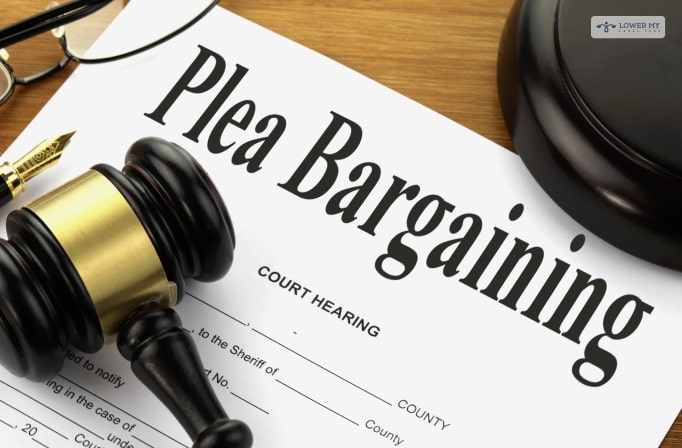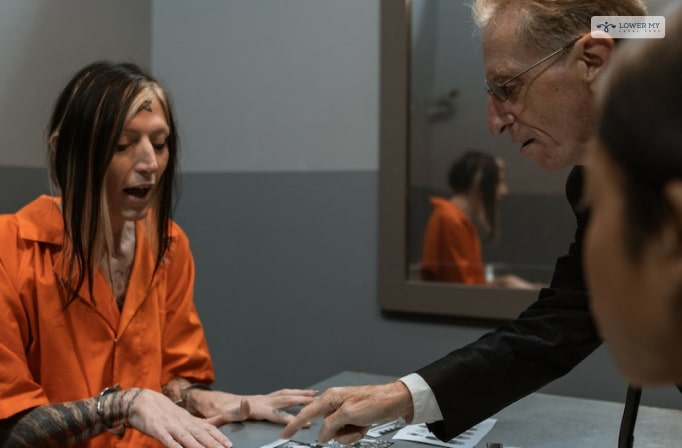Plea is a process through which an individual might ask for a favor from another. In terms of law, the process of plea bargaining is commonly observed within criminal law proceedings.
In this article, we will be discussing the concept of plea bargaining and how it works within the criminal justice system.
What Is Plea Bargaining?

So, here’s the deal: When someone is facing criminal charges whether it’s for swiping a candy bar or something more serious, they’re usually given a choice. They can either roll the dice and take their chances with a trial, where they could win big or lose big, or they can enter the thrilling world of plea bargaining.
The Art of the Plea Bargain
Plea bargaining is a bit like haggling at a bazaar – both sides, the prosecution (the government) and the defense (the accused and their attorney), sit down to hash out a deal. They’re trying to reach a compromise, a middle ground that’s acceptable to both parties.
The Prosecution’s Angle
From the prosecution’s point of view, they’re often looking for a guaranteed win. They may offer a lesser charge or a reduced sentence in exchange for a guilty plea. It’s like saying, “Confess to a smaller crime, and we’ll go easy on you.” This can save time, money, and resources that would be spent on a trial.
The Defense’s Strategy
On the other side of the table, the defense is considering their odds. They weigh the risks of a trial against the benefits of a plea deal. Sometimes, they might advise their client to plead guilty to a lesser offense to avoid the uncertainty and potential harshness of a trial. It’s like saying, “Take the deal, and we’ll avoid a bigger mess.”
Why Do People Go for It?
So, you might be wondering why someone would admit to something they may or may not have done. Well, there’s the allure of a reduced sentence or a lesser charge. Plus, the uncertainty of a trial can be nerve-wracking. Some people prefer the certainty of a plea deal to the anxiety of a courtroom showdown.
The Judge’s Role
But wait, there’s a referee in this game, too – the judge. The judge has to approve the plea bargain. They want to make sure it’s fair and just. They’re like the final arbiter, ensuring that the deal isn’t too one-sided.
Is It Always a Win-Win?
Plea bargaining isn’t without its controversies. Critics argue that it can lead to innocent people pleading guilty out of fear or pressure. Others say it can result in lenient sentences for serious crimes. It’s a delicate balancing act, and not everyone agrees on the rules.
In the world of criminal justice, plea bargaining is a fascinating dance between risk and reward, between justice and efficiency. It’s a way for the legal system to keep the gears turning while offering individuals a chance to make choices about their fate. And like any negotiation, the outcome isn’t always predictable. It’s a legal game of strategy, chance, and consequences that unfolds in courtrooms across the country every day.
Pros And Cons Of Plea Bargaining

Pros of Plea Bargaining:
Efficiency:
One of the big pros is that it keeps the wheels of justice turning smoothly. Trials can be long, expensive, and clog up the court system. Plea bargains help clear the backlog, saving time and resources.
Certainty:
For the defendant, it offers predictability. Going to trial can be a roll of the dice; you might win big, but you might also lose big. A plea deal often means a known outcome, which can be less stressful.
Reduced Sentences:
Defendants may get a lighter sentence compared to what they could face if they went to trial and were found guilty. This can be a significant incentive to strike a deal.
Prosecution Control:
It gives prosecutors some control over the outcome. They can ensure a conviction without the uncertainty of a trial. This can be especially important in cases where a guilty verdict is essential for public safety.
Victim Consideration:
Plea bargaining can take into account the wishes of the victim. For example, a victim may prefer that the defendant receives counseling or community service rather than a long prison sentence.
Cons of Plea Bargaining:
Innocent Defendants:
A major concern is that innocent defendants might feel pressured to plead guilty to avoid the risk of a much harsher sentence if they lose at trial. This can lead to wrongful convictions.
Lack of Transparency:
The plea bargaining process can be opaque. Deals are often struck behind closed doors, raising questions about fairness and transparency in the legal system.
Risk of Leniency:
Critics argue that plea deals can result in lenient sentences for serious crimes. This can undermine public trust in the justice system.
Coercion and Pressure:
Defendants, especially those who can’t afford strong legal representation, may feel coerced into accepting a plea deal. This raises ethical questions about the fairness of the process.
Loss of Right to Trial:
Some believe that plea bargaining, by incentivizing guilty pleas, erodes the right to a fair trial, which is a fundamental aspect of the justice system.
So, you see, plea bargaining isn’t a black-and-white issue. It’s a tool that can be incredibly useful for both the prosecution and defendants, but it’s not without its drawbacks. Balancing the need for efficiency with the rights of the accused is an ongoing challenge in the legal world. It’s a bit like walking a tightrope, trying to ensure justice is served while keeping the system from grinding to a halt.
How Does Plea Bargaining Work?

Alright, let’s dive into the nitty-gritty of how plea bargaining works. It’s like a high-stakes negotiation with a dash of legal strategy, all rolled into one intriguing process.
Step 1: The Dance Begins
Imagine you’re in a courtroom or a lawyer’s office. The defendant (the person accused of a crime) and their attorney sit on one side, while the prosecutor (representing the government) sits on the other. They’re like two chess players sizing up their opponent.
Step 2: The Offer is Made
The prosecutor usually kicks things off by making an offer. This offer could be a reduced charge (like going from murder to manslaughter) or a lighter sentence (say, five years instead of ten). It’s like saying, “We’ll go easy on you if you plead guilty.”
Step 3: The Defense’s Move
Now, it’s the defense’s turn to strategize. They consider the offer and discuss it with their client. They’re like the negotiators in a business deal, trying to get the best possible outcome. They might counteroffer, saying, “We’ll plead guilty to a lesser charge, but we want an even lighter sentence.”
Step 4: Back and Forth
This back-and-forth can continue for a while. Think of it like a game of ping-pong, with offers and counteroffers going back and forth until both sides find some middle ground.
Step 5: Finding Common Ground
When both sides agree on the terms, they reach a plea agreement. It’s like shaking hands on a deal. The defendant agrees to plead guilty to a specific charge or set of charges, and the prosecutor agrees to recommend a particular sentence or concession.
Step 6: Judge’s Review
But wait, the judge isn’t just a spectator in this game. The plea agreement goes before the judge for review. The judge ensures it’s fair and that the defendant is entering into it voluntarily and with a clear understanding of the consequences.
Step 7: Defendant’s Decision
Finally, the defendant has to make a crucial decision. They can accept the plea agreement and plead guilty in court, or they can reject it and choose to go to trial. It’s like the ultimate “yes” or “no” moment in this legal drama.
Step 8: The Outcome
If the defendant accepts the plea deal, it’s a done deal. The court proceeds with the agreed-upon sentence. If they reject it, the case heads to trial, and it’s a whole different ballgame.
So, there you have it – the intricate dance of plea bargaining. It’s like a strategic negotiation where both sides aim to get the best possible deal. It’s not always a straightforward process, and the stakes can be sky-high, but it’s a crucial tool in the world of criminal justice, allowing for the resolution of cases without the uncertainty and expense of a trial.
Final Thoughts
Now you have a fair idea regarding the ways one can go about the plea bargaining process within the criminal justice system. It is usually conducted by the defendant of the case involved in a particular kind of crime.
I hope you have found this article helpful and do comment with your opinion regarding plea bargaining.
Read Also:






